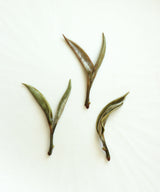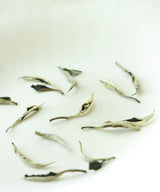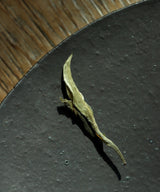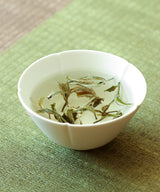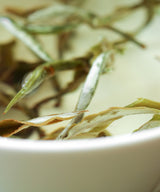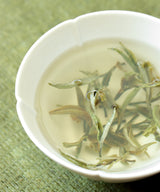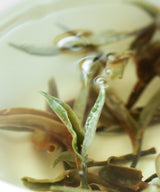Green Peony
头采绿牡丹
Harvest
March 2023
Origin
Jinggu, Yunnan
In 2006 Tang Wang left his corporate job in the city, Kunming, and rented a small place in rural Yunnan where his only intentions were to read, reflect, and drink tea with friends. In one of these chats an old friend, Li, suggested that Tang grow tea in Li’s hometown, Yangta Village. That July the two of them traveled to Jinggu in Yangta and leased 11 acres of forested area from Li’s niece.
The area Tang and Li leased was wild growth, situated at about 6500 ft elevation. On this land they planted 70,000 Jinggu Big White tea trees; an indigenous varietal of white tea unique to this area. (There are still a few ancient examples of them, some over 400 years old, in and around Yangta village). Having never made tea before, Tang read and researched as he went – learning by way of experience and reference texts in equal measure.
Only 30,000 of the initial 70,000 Jinggu Big White trees Tang and Li planted survived. Tang found out, somewhat far into the process, that there would be no tea to make regardless of how many trees made it, as one cannot harvest newly planted tea trees until they have stood in the ground for 3 years. And so they waited, and Mr. Tang continued to learn.
Doing some research on historical teas from Yunnan, he learned that, around 800 years ago, there was a Tribute white tea made in Jinggu called “White Dragon Beard” that was very similar to what we know nowadays as Silver Needle. When the Jinggu Big White trees were ready to harvest he was eager to try making white teas like Silver Needle and White Peony from their leaves as was traditionally done, but that, on account of economic pressures, had fallen out of practice. He has since experimented with this to great success.
Green Peony is made from the First Harvest leaves of the tea trees Mr. Tang and his friend Li planted themselves in 2006, when they started the tea farm. There is a small period of time in early spring, before the Qingming solar term, where the climate in Yunnan causes one side of the tree’s leaves to turn a dark, intense shade of green, while the other side becomes a fuzzy silvery-white.
Green Peony is made only with leaves gathered at this moment and, as it is such a brief period of time, crafting this tea requires great attention to the weather. When the conditions are right Mr. Tang is not always able to find enough hands to help him harvest before the leaves go through their next transformation. Green Peony is a spontaneous tea.
When it is successfully set into motion, the leaves are picked according to the traditional standards of one bud and one leaf. Mr. Tang then spreads the fresh leaves out on bamboo trays and takes them indoors where they gradually oxidize for around sixty hours. Once the leaves reach 20% moisture content they are taken to a glass house that Mr. Tang built for sun-drying. The tea is left there for a few hours each day in the morning, before the sunlight is too strong. When the leaves are dry they are placed in a large ceramic jar and aged for two weeks, which evens their flavor and dispels the grassiness that the fresh tea leaves have.
The dried tea leaves maintain their recto-verso appearance: very dark green on one side, while the other side is covered in a silver fuzz that almost looks like suede. As its appearance would suggest, this tea is about texture. Its mouthfeel is smooth and pleasurable, with a soft weight that underlies its refreshing, floral qualities. It is an elegant tea, and shows notes of honeysuckle, calla lily, plum blossoms and fresh apricots with great clarity.
. . .
Brewing guide
| Tea | 4 g |
| Temperature |
90°C |
| Water | 120 ml |
| Steep time | 10 - 60 sec |
| No. of infusions | 10 |

